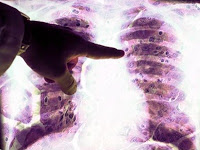Asbestos cancer attacked with medical 'magic bullets'
 Australian scientists have made progress on a new technique for fighting asbestos-related cancers.
Australian scientists have made progress on a new technique for fighting asbestos-related cancers.
Following a three year study, researchers from the Asbestos Diseases Research Institute (ADRI) say they have found a way to diminish the growth of mesothelioma tumours by using a targeted 'magic bullet' of custom-made genetic material.
Mesothelioma has often been called the 'man-made cancer', due to it being caused by exposure to asbestos fibres used as insulation. Mesothelioma cancer has no cure and an average post-diagnosis survival of just six to eighteen months, but this new breakthrough could provide an improved quality of longer-lasting life for sufferers.
Researchers are moving ahead with trials for a synthetic version of genetic material tailored to target mesothelioma tumours. The 'magic bullet' approach involves carrying drugs to the site of the cancer on-board cells which have been created specifically for the journey. Trials are expected to start this year with 20 to 30 recruits to determine the optimal and safe doses of the potential treatment. Research so far has been funded by a $1.2 million donation from the family of Andrew Lloyd, who died of malignant mesothelioma in August 2011.
“To do this we need further funding of $750,000. If the results are favourable and we will know that in about two to three years, this may lead to a new form of treatment for patients with mesothelioma,” said Professor Nico van Zandwijk, Director of the Asbestos Diseases Research Institute.
Experts say cases of mesothelioma cancer can only increase. The once-common building material has created two waves of cancer occurrences observed so far; the first were asbestos miners, the second were asbestos factory workers. The third wave is only just beginning, with constantly increasing rates of cancer among builders and renovators working in the seventies and eighties.
According to the Australian Institute of Health and Well-being there were 666 cases of mesothelioma diagnosed in 2010-11 and 642 deaths.
The ADRI's research paper is available here.








 Print
Print